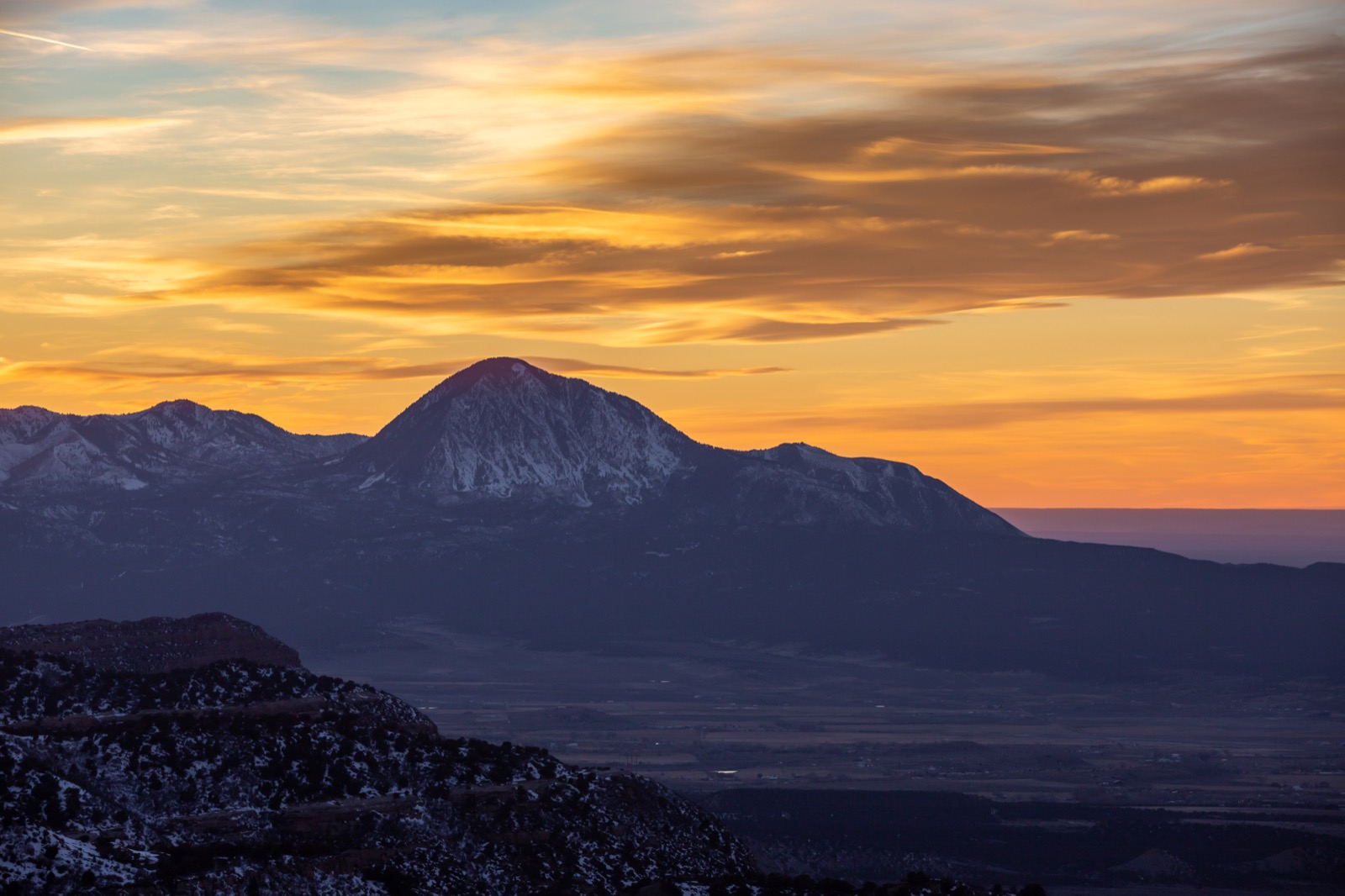Mesa Verde is quite literally named for its topography. The enormous mesa that stretches above Montezuma Valley is not only distinct and scenic; it’s also a vital formation in the various storylines that make up the tapestry of the region, from the ancients to pioneer history.
“Topography is key to everything,” says Jeff Brown, director of the Montezuma Heritage Museum. It’s in the seven-degree slope in what is now Mesa Verde National Park that gave ancestral Puebloans an extra month of growing season to the veins of ore flowing from the La Platas to the Arizona soil and the flow of the rivers through the region. It all meets to create opportunity for those who have found their way here throughout our timeline.
Though it remains a mystery why the tens of thousands of ancestral Puebloans left their remarkable and sophisticated homes over 700 years ago, it’s no mystery what brought the subsequent pioneers of the valley here. In each case, opportunity shone from the landscape and travelers pursued it.
In your case, when history and adventure bring you to Mesa Verde Country, we suggest that you first stop at the Montezuma Heritage Museum in Cortez. View artifacts and exhibits about the heritage and pioneers of recent Mesa Verde Country history before going out to explore both ancient and more recent historical landmarks around Mesa Verde Country.
Roots

One storyline you’ll find running throughout most of Mesa Verde Country’s history is agriculture.
“Farming is one of the aspects from the Ancestral Puebloan times to modern times where opportunity is very strong here,” explains Brown. It’s believed that the Ancestral Puebloans recognized the ability to grow crops in the ideal climate, soil and altitude, then they expanded the variety of crops they grew by trading with travelers—from beans to corn to alfalfa.
The ability to feed humans as well as livestock ties this storyline to one that came to follow that of silver and gold. As a result, by the 1900s, the orchards that came to thrive in McElmo Canyon had earned large-scale fame—even gaining recognition at the Chicago World’s Fair.
Of course, today, the orchards contribute apples and grapes, as well as ciders and wines, to the Mesa Verde Country tapestry. The alfalfa of the Ute Mountain Ute Tribe is of the caliber that it is shipped to the fastest racehorses around the United States. You may recognize Bluebird flour, which is milled in Cortez and remains a key ingredient in traditional Navajo tacos distinctive of the area. The flavors of Mesa Verde Country have roots in the earliest human history we know of the area.
Silver, Gold & More

The mountains surrounding this plentiful valley also held another resource: ore. In 1765, Juan Rivera of Santa Fe followed rumors of silver to what we now know as La Plata Mountains. In the process, he actually helped find the first gold samples from the area. Interest in gold didn’t catch, however, until the 1870s, when miners showed up in search of the precious metal.
“That was the first domino to fall,” Brown said of the development of Mancos, Dolores, and Cortez.
The opportunity to strike it rich enticed many in the 1870s, and with them came more industries, more opportunities, new minerals to mine, and more interwoven stories. The first trading post in the early days of mining had the effect of connecting the cultures of the Ute Mountain Utes with myriad incoming pioneers, further tying their storylines together in the landscape of Mesa Verde Country.
The Beginnings of a Tapestry

As more gold miners found their way to the settlements of Rico and Mancos, cattlemen saw the opportunity of unmet food needs and began to establish ranches in the 1870s, becoming the first permanent Anglo settlers in Mancos.
A booming cattle industry in Mancos in turn supported the agriculture that was already established in what would become the community of Cortez. Technological advances such as the irrigation canals and flumes in 1899, the construction of McPhee Reservoir in the 1980s, and updates to American water rights laws set Cortez and Ute Mountain on a trajectory for the unique and long-enduring agricultural heritage we continue to celebrate today.
Railroad Spikes Growth
The arrival of the Rio Grande Southern Railroad line in 1891 through Dolores and Mancos brought not only expansion of economies, but also a population explosion in the valley. In addition to precious metal ore, the rail cars carried passengers and a great deal of lumber from the town of McPhee.
Located near Dolores, McPhee was the townsite built around a mill, where Hispanic Penatenes cut and milled local lumber. McPhee provided most of the state’s timber from 1924 to 1929 with ponderosa pines that were as tall as horses when felled. Though the community of McPhee was later abandoned to make way for the McPhee Reservoir, evidence of these pioneers still lies along the shores, in the Pioneer Heritage Museum, and in the threads of Hispanic culture running throughout the culinary and artistic experiences of today’s communities.
In the following decades, coal, uranium, oil, and tourism also unfolded in the valley. Mesa Verde National Park was established in 1906, the railroad lines came to serve more travelers than freight, and many of the opportunities that brought people to the valley continued to hold strong as Cortez, Dolores, and Mancos entered the 21st century.
Exploring Pioneer History


Which brings us today, when you can paddle your boat above the underwater ghost town of McPhee or visit the McElmo Creek flume near the Montezuma County Fairgrounds, stroll amongst the ancient this landscape’s earliest farmers, learn about the Galloping Goose train at the historic depot in Dolores, and, of course, learn from experts in pioneer history at the Montezuma Heritage Museum in Cortez.






